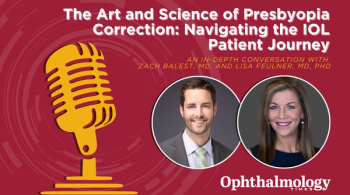
|Articles|June 5, 2004
Secrets of the glaucoma surgeon: preventing complications
The use of antiproliferative agents has helped increase thelikelihood of successful filtering surgery by inhibiting the wound healingresponse. The problem is that these agents also contribute to the risk ofbleb leak and bleb-associated infection, reported Paul J. Lama, MD, of theUniversity of Medicine and Dentistry of New Jersey, Newark, and the Veterans'Administration Medical Center, East Orange, NJ.
Advertisement
Newsletter
Don’t miss out—get Ophthalmology Times updates on the latest clinical advancements and expert interviews, straight to your inbox.
Advertisement
Latest CME
Advertisement
Advertisement
Trending on Ophthalmology Times - Clinical Insights for Eye Specialists
1
Avisi Technologies treats first patient in SAPPHIRE trial for glaucoma
2
FDA approves Amneal Pharmaceuticals' cyclosporine ophthalmic emulsion 0.05%
3
Lotus submits NDA in South Korea for LENZ’s presbyopia treatment VIZZ
4
Belite Bio releases topline results from phase 3 DRAGON trial of Tinlarebant for STGD1
5
















































.png)


